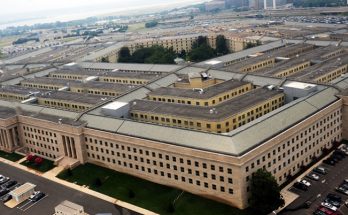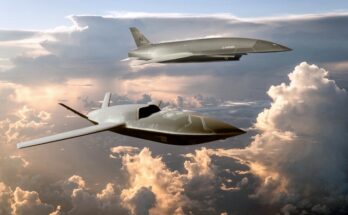
For decades the South China Sea has been the site of simmering disputes over ownership of the many small reefs, shoals and islands that dot the approximately 1.4 million sq-mi (3.6 sq-km) waterway. Seven governments claim varying sections of the region as sovereign territory and international litigation has done little to resolve the overlapping claims.
At the center of this tangled web is a curious flashpoint that has drawn renewed attention in recent months: the hulk of a World War II-era ship, wrecked on the Second Thomas Shoal, a small atoll in the Spratly Island chain. The vessel, an inoperable Philippine landing ship known as the Sierra Madre, has been rusting on the shoal since 1999, when the Philippine navy deliberately ran the ship aground for use as an outpost, asserting Manila’s claim to Second Thomas. A small detachment of Philippine marines garrisons the wrecked ship, reliant on infrequent resupply runs. While several countries claim the area, it has become a specific point of contention between the Philippines and China, the latter of which has become increasingly assertive in recent years.
Recent Clashes
The dispute has flared in past months, as China has escalated attempts to interfere with Manila’s resupply of the Sierra Madre, using increasingly dangerous and confrontational tactics. On March 5, ships from China’s expansive Coast Guard fleet turned water cannons on the Philippine Navy-chartered civilian transport ship Unaizah Mae 4, injuring several sailors. On March 23, the Unaizah Mae returned to resupply the outpost and was once again fired on by Chinese Coast Guard water cannons, crippling the ship’s propulsion system and injuring more crew.
According to info from the Center for Strategic and International Studies, the number of Chinese vessels monitoring resupply runs has increased tremendously from an average of just one in 2021 to 14 in 2023. Philippine ship numbers have remained relatively constant at 2-3 ships since 2021.

Since August, Beijing’s interference tactics have escalated, including the use of ramming and water cannons, reflecting both a growing assertiveness in the area and a greater confidence in its Coast Guard capabilities. The rise in confrontational behavior coincides with the release of a new map of claimed Chinese territory in the South China Sea, the so-called 10-dash line published by Beijing’s Ministry of Natural Resources on Aug. 28. Expanding on the previous 9-dash line, the new map extends China’s already sizeable claims in the region.
China has justified its actions by accusing the Philippines of covertly bringing in construction supplies to entrench its position at Second Thomas. The Philippines has refuted these claims, though The Maritime Executive reported in December that funds had apparently been allocated in the 2024 budget for the creation of a permanent base at the shoal. While specific figures were not disclosed, previous proposals included $1.8 million for the construction of a docking area for ships and residential areas for the garrison. Though Manila has denied rumors of expanding its footprint, it has asserted its right to resupply and maintain its outpost, citing a July 2016 Hague Permanent Court of Arbitration ruling that dismissed China’s claims of historic rights to the contested region. While not ceding the area to the Philippines, the ruling challenged China’s claims. A fact that Beijing has repeatedly dismissed.
Why Second Thomas?
At face value a rusting ship on a submerged reef may not seem worth the risk of a regional conflict, however, the Spratly Island chain in which it is located is a militarily and commercially strategic position. Sitting atop possible massive oil and gas reserves, control of the vital island chain could be a major economic asset to regional powers. For such resources, some international actors, Beijing and Manila included, may be willing to risk a fight.
Though territorial disputes have hampered efforts to assess the energy potential of the South China Sea, the U.S. Geological Survey estimates that the area may contain anywhere between 2.4 billion barrels and 9.2 billion barrels of petroleum and between 62 and 216 trillion cubic ft of natural gas in undiscovered resources. These vast potential resources greatly increase the stakes of the conflict, particularly for China and the Philippines. Both nations are reliant on energy imports to support their growing economies. Beijing overtook Japan as the world’s largest importer of liquified natural gas (LNG) in 2023, the same year China’s crude oil imports reached an all-time high.
Manila has likewise been importing LNG since 2023, with the major Malampaya gas field expected to run dry by 2027. Philippine President Bongbong Marcos Jr. has sought to cut energy prices to incentivize foreign investment in the country, with officials lauding an incoming energy package, which will, according to President Marcos resolve “exploration issues” in the South China Sea. While details are unclear, Marcos’ strategy seems to favor the surveying of energy resources in the area, likely before the expiration of his presidential term in 2028. Such a policy, if not done with the express consent of Beijing, could provoke further conflicts in the area. As Marcos’ government deepens security ties with the U.S., the Philippine president may be counting on Washington to play the role of enforcer to its energy exploration in the region if he cannot come to terms with Beijing.
With a need for energy underpinning nationalistic claims to the region, Second Thomas has emerged as a potentially decisive battleground for the economic and geopolitical ambitions of both the Philippines and China.
Broader Impacts
With both China and the Philippines intent on pushing their claims to Second Thomas and the broader Spratly Islands, the area could prove a tinderbox for future conflict.
Beijing is well-equipped to escalate the situation, with several “gray-zone” tools, shy of war, at its disposal. A blockade of the Sierra Madre aimed at preventing resupply would not be unheard of, with China having attempted a similar strategy from March to September of 2014. Beijing could try the same tactic twice, now emboldened by a greater Coast Guard presence in the region, hoping to starve out the garrison and force their departure. Alternatively, China could use government-affiliated civilian vessels such as commercial fishing ships to provoke a clash which could then justify the intervention of its Coast Guard, blaming the Philippines for the escalation.
While Beijing has pursued the more belligerent stance so far, one should not discount the possibility of a Philippine provocation, particularly relating to energy exploration, sparking a clash. Attempts to construct a new, more defensible outpost on the shoal could also provoke China into taking more direct action. In either situation U.S. forces may be pulled in, serving as muscle for the government in Manila.
* * *
Regardless of fault, new conflicts over the Spratly Islands, particularly Second Thomas, seem concerningly more plausible today than in years past. As China develops its naval power, small reefs and shoals like Second Thomas may become testing grounds for its own capabilities and the responses of local rivals, as well as the resolve of the U.S. to support its partners. The region’s potential energy wealth has further set the stage for a struggle over control of the crucial waterway, with the possibility of significant escalation in the short-to-medium future. While either side could escalate or provoke, neither one likely seeks a major regional conflict. However, the capacity for uncontrolled intensification may well go beyond the intentions of Beijing or Manila.
Tom Freebairn is a weapons analyst with Military Periscope covering naval affairs and maritime systems. He pursued an undergraduate degree in International Relations and Modern History, followed by a master's in Middle East, Caucasus, and Central Asia Security Studies from the University of St. Andrews. His master's thesis focused on the relationship between oil and separatist politics in Northern Iraq. Tom's interests include the politics of energy, ethnic separatism, the evolution of naval warfare, and classical history.




